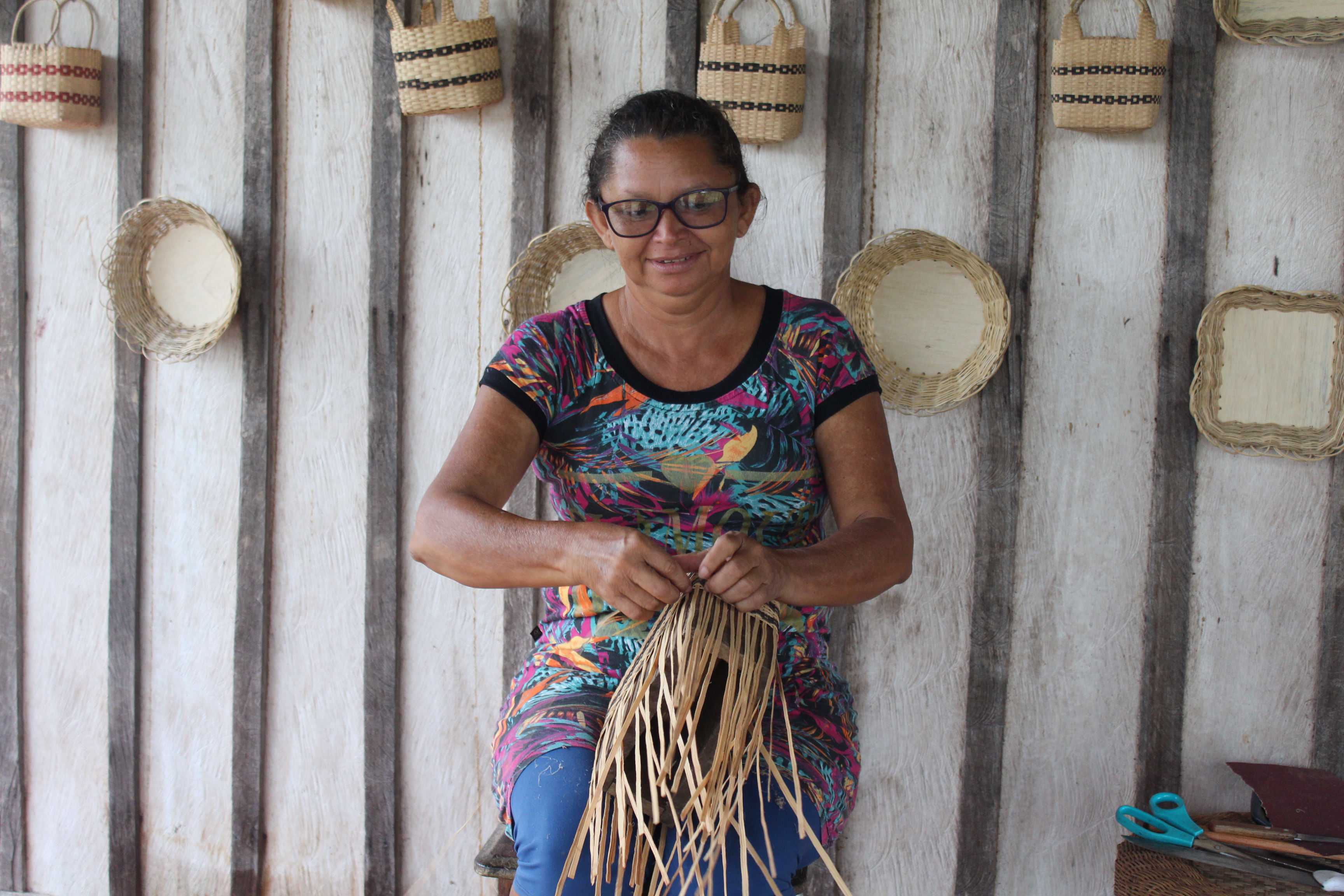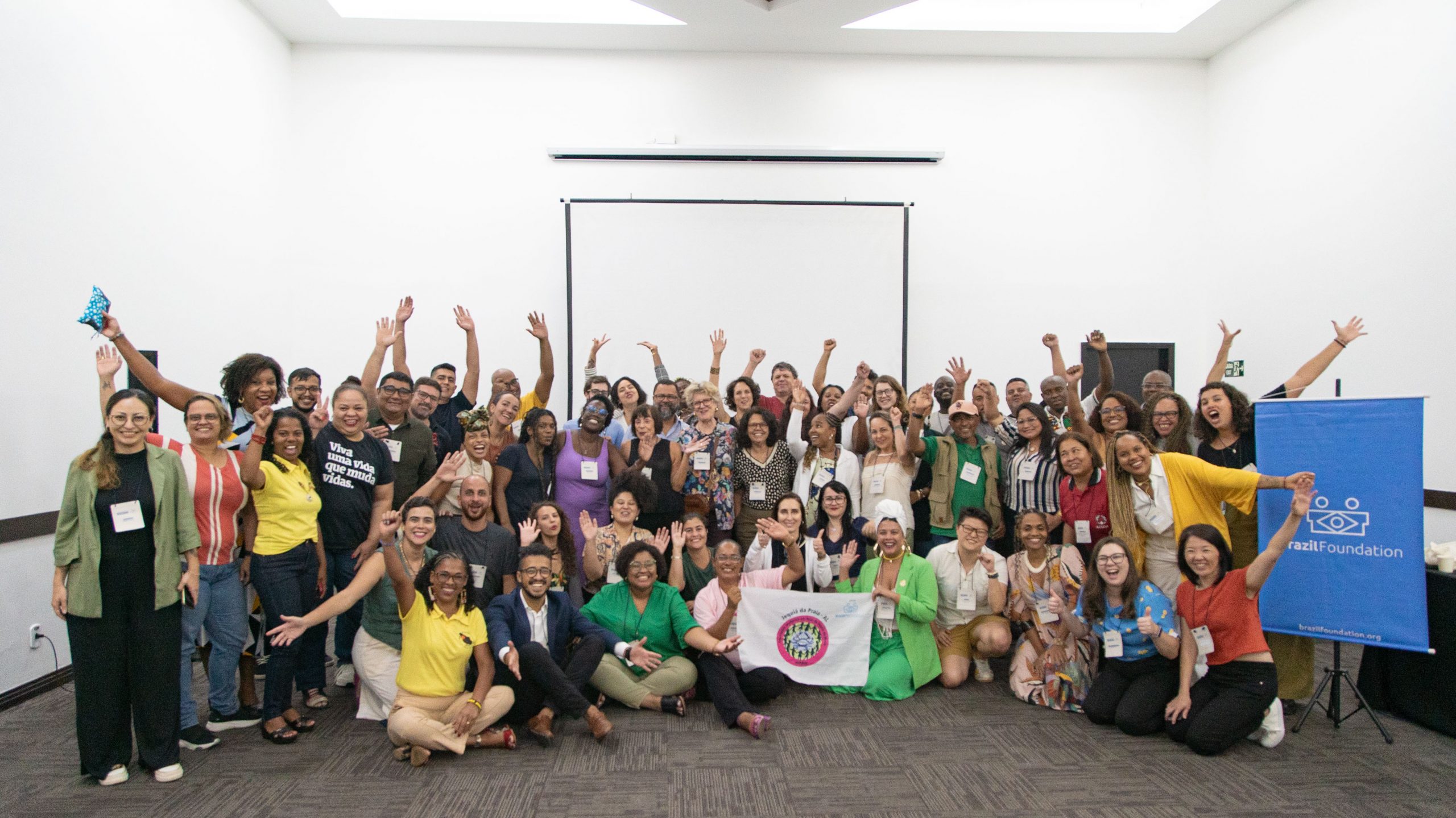In the Amazon, Casa Do Rio Is Combining Innovation with Tradition to Promote Local Development
Casa do Rio’s work impacts approximately 300 families in the region.
BrazilFoundation monitoring coordinator Bruno Faria traveled 12 hours by plane, boat and car to reach Careiro Castanho, a town in the Amazon where Casa do Rio works. By visiting the projects we can see their work firsthand and ask questions so that we can better understand the context in which they work and their challenges. In this way, we can reflect upon the impact of their grant. In this piece Bruno gives us a closer look into his visit.
By Bruno Faria
I began my journey to Casa do Rio at the edge of the Rio Negro in Manaus, at the port of Ceasa. At that port there is a popular market where you can cross over to Careiro da Várzea, taking you to the BR-319, and then to our final destination.
Casa do Rio was born from a desire to collaborate to promote sustainable development in the Amazon region. Their work is both local and global; it applies traditional knowledge, and it impacts approximately 300 families in the region.
I await Thiago Cavalli, the man who started the Project, at the voadeiras terminal of the port. I walk through the popular market where local fish and local products are sold and I see the many giant ferries crossing with trucks, fuels and specific groceries.
We take off from Manaus with the strong sound of the voadeira engine and with the water of the Rio Negro splashing all of us in the boat. Arriving in Careiro da Várzea, a car takes us to Careiro Castanho, where the Saberes da Casa do Rio Center is located. The town is a center of innovation for knowledge Exchange, and where we would stay for the next three days. The BR-319 connects Careiro da Várzea to Porto Velho. Driving on the highway I was able to understand the local context, and how important the organization’s work is for the development of the region.
As we continue to drive the distance between the houses grows, making space for plantations and the forest. Arriving in Careiro Castanho I see a small town marked by high rates of violence and drug trafficking, about which Thiago warned me. I enter the Saberes Center I am surprised by a welcome sign made by the young people who participate in the organization’s graffiti workshop.
Upon arrival I meet with some of the leaders of the supported projects, who give me an overview of BrazilFoundation’s impact on the region even before I have a chance to visit them firsthand. They explain to me the significance of their exchange with MMENPA (another organization in our network) in strengthening women’s enterprises. I can see how the close relationship between Thiago and the residents has been key to the consolidation and development of their work.
Casa do Rio’s receptivity and openness to new ideas is one of the strong points points of their leadership. They are constantly exchanging knowledge amongst themselves, and their meetings end up being almost a classroom for all, with many themes being addressed – from how to prepare pupunha (a fruit) to how to render more through synthetic agriculture – a system that combines sustainable soil management with practices that promote sustainability and conservation for the entire ecosystem.
The meeting with the leaders ends with everyone standing in a circle holding hands, forming a chain, in appreciation of the morning of learning we had with each other.
Soon after, we meet with the representative from the State Secretariat of the Environment of Amazonas, who is also working in partnership with Casa do Rio. The Secretariat recognizes Casa do Rio’s work as the main development in the region. Their partnership intends to curb future deforestation actions and to integrate their work into other more isolated communities.
I meet the youth of the Tupigá collective, whose communities have been impacted by Casa do Rio’s projects. They convene at the Saberes Center to hold cultural activities and training courses. I get the chance to see the audio-visual materials and fanzines that they’ve produced, and hear some of their dreams for the future.
The next day I visit the projects whose leaders I had met the day before. It’s raining, and I can see the difficulties that most of the residents of the region face in order to perform simple activities on a daily basis. I spend the entire day on the BR-319 visiting the projects. I meet with women who produce handbags from straw, bags that are being sold abroad and featured on the São Paulo Fashion Week catwalks. These women have created a kind of museum area to exhibit all the products they’ve made; I’m impressed by how their production has evolved from before the project until now.
I also see seedling nurseries, a space for raising turtles to be introduced into the wild, plots for agriculture, and honey farmers. Casa do Rio performs a wide range of connected activities in the area, and encourages non-aggressive agriculture in the Amazon as to prevent soil degradation to the point that renders it unproductive.
Casa do Rio has been working with the communities to help promote great changes in the region, and intends to expand its activities. Thiago is recognized as a leader by the locals, the Secretary of the Environment, and the judicial branch of the Amazon.
An initiative that received its first grant from BrazilFoundation is consolidating itself today as one of the leading organizations in one of the most vulnerable places in our country. There are many projects in the Amazon, but few work together and directly with the population as the Casa do Rio has done. Casa do Rio is maturing and should soon begin to achieve even greater results.
This visit was a pleasant experience. I return home under heavy rain, with dolphins accompanying our voadeira on the Rio Negro, and with the certainty that the investment back in 2014 is making effective and lasting changes.
[envira-gallery id=”21593″]

